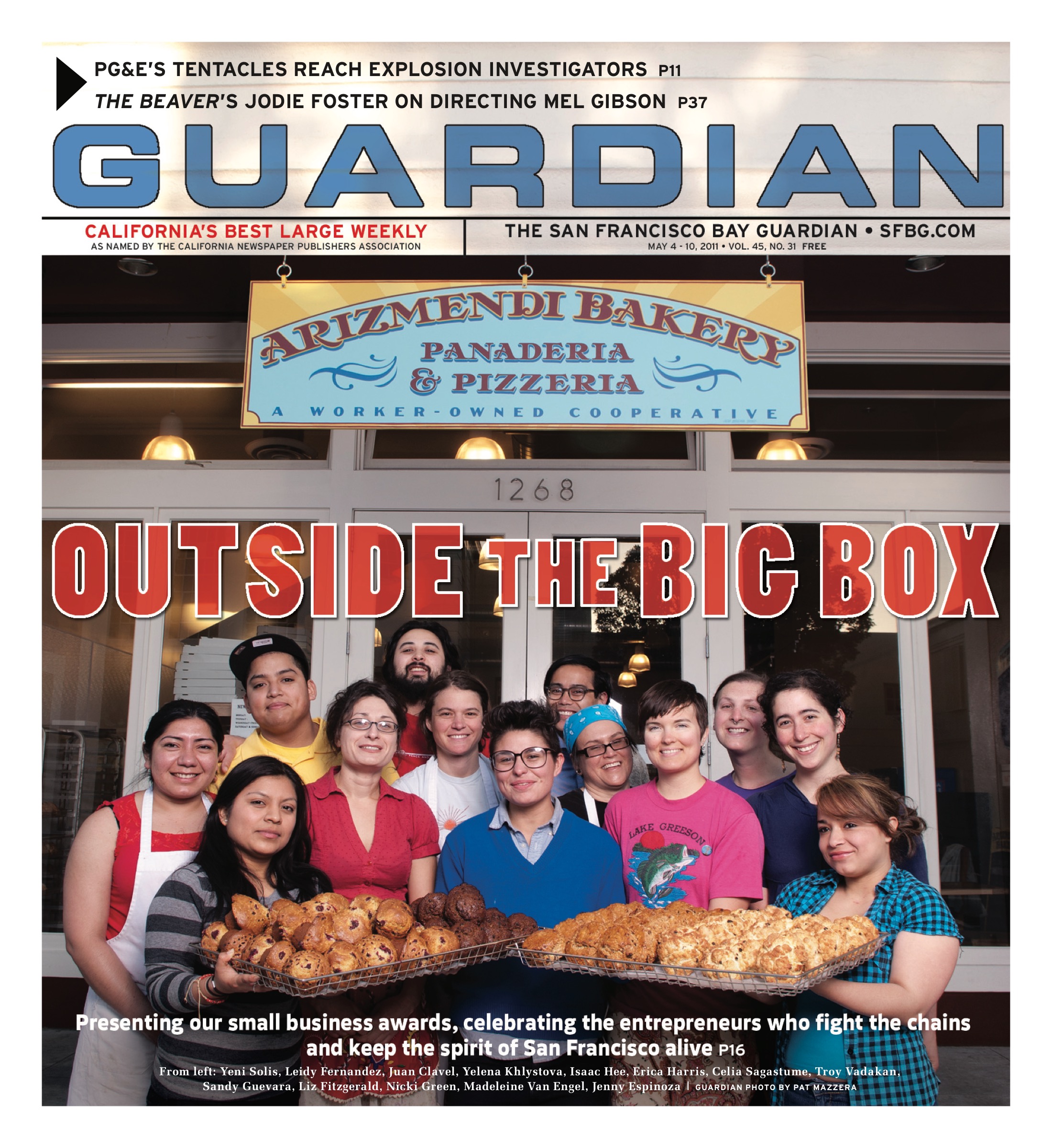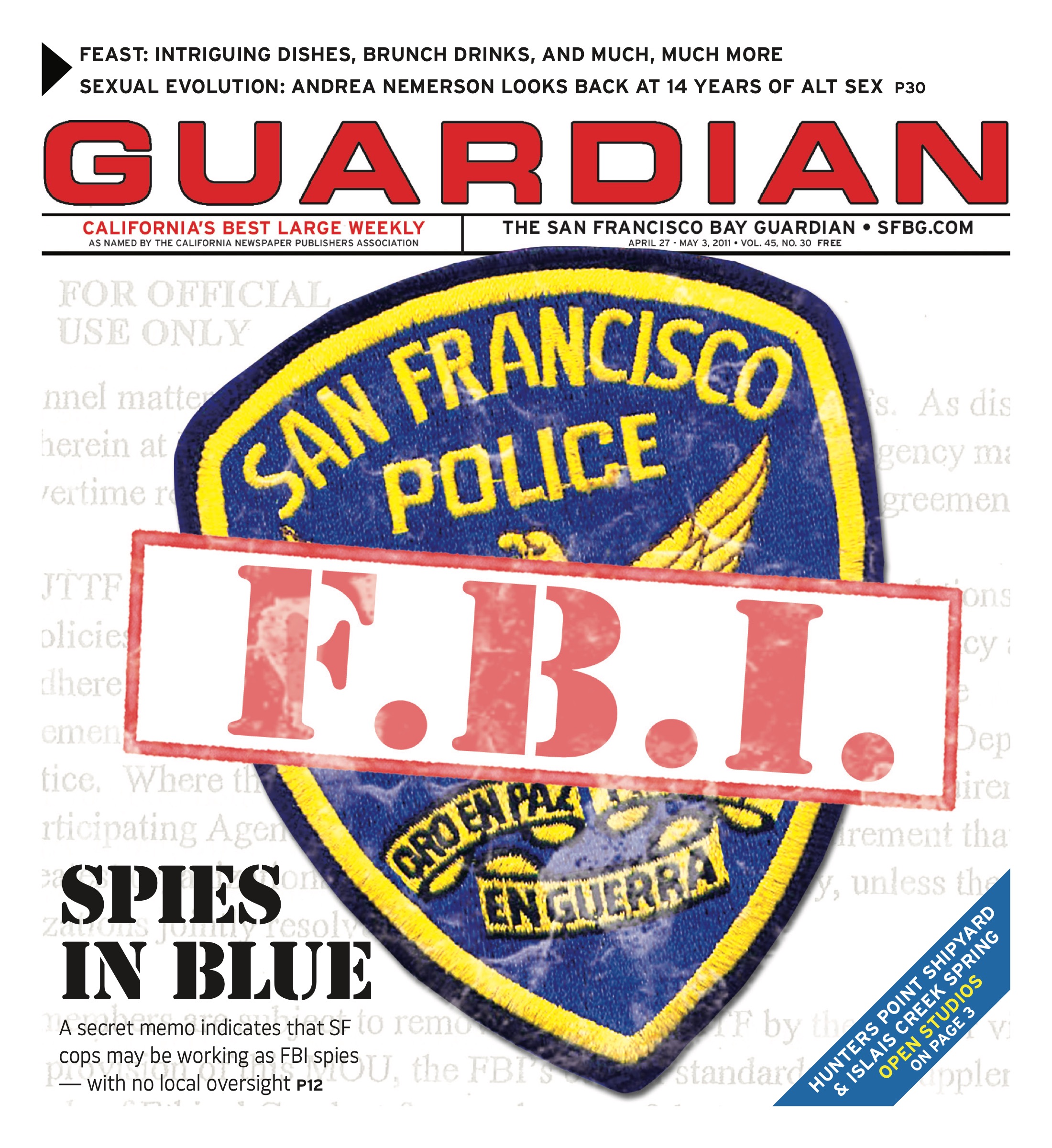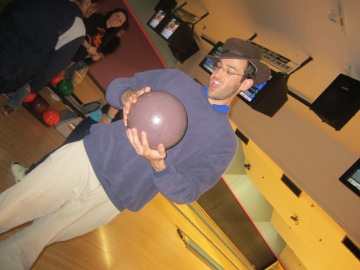Reporting by Sarah Phelan and Linda Man. Photographs by Sarah Phelan
Thirty-six candidates have filed papers in the 2011 mayor’s race, but only former Sup. Michela Alioto-Pier, Sup. John Avalos, Board President David Chiu, former Sup. Bevan Dufty, former Sup. Tony Hall, City Attorney Dennis Herrera, venture capitalist Joanna Rees, City Assessor-Recorder Phil Ting, and Sen. Leland Yee got to publicly race out of the starting gate May 5 during the first official mayoral forum. And while the decision to exclude the other 25 candidates was understandable from a logistical perspective, it raised the perennial question as to how the concerns of marginal communities and marginal candidates will be addressed during the campaign. (N. B. Write-in candidate and taxi driver Harold Miller used the forum to circulate his campaign literature, a strategy he also employed during this week’s cab driver protest around MTA credit card fees)
The May 5 mayoral forum, which the University of San Francisco’s Leo T. McCarthy Center for Public Service and the Common Good and buildOn, a national non-profit organization, hosted, was apparently modeled on the 2008 Presidential Candidate Forum on Service. And it was intended to enable candidates to ‘address substantive questions about the future of service and engaged citizenship in San Francisco,” according to a USF press release.
But while the forum gave the audience a chance to meet nine mayoral candidates up front and personal, and though the candidates sought to differentiate themselves as best they could, the open-ended nature of the questions that students got to pose, resulted in more talking around the issues, and less answering of the questions. By forum’s end, the one message that the mostly student audience seemed to have gotten was that the city is out of money, thanks to a $350 million dollar deficit, and that folks need to volunteer, and, come to think about it, why not volunteer for someone’s mayoral campaign.
“It was more like mayors promoting themselves. Are they supposed to be like that?! The main thing I learned was that the city is in huge debt,” one student observed, after listening to the candidates talk about their experience giving back to the community and what they hope to change if elected.
USF student Christina Lopez, in her junior year and majoring in Politics, told the Guardian that if she had to vote at last night’s candidate forum, she would have chosen Yee. She said that out of all candidates, Yee offered more insight on how he would change things and what he would do if he was mayor. “The forum was helpful because I didn’t really know all the candidates,” Lopez said. “ I will follow the campaign and see how they actually fall through with what they said about rebuilding SF.”
Audience member Jack Frohlich said he still has no idea who to vote for. “I want to hear where we are going to get the money to do what we are going to do,” Frohlich said. “I want to hear somebody proposing a surcharge on the richest people in the state to close the budget gap.”
USF student Andriana Duckworth, a sophomore majoring in Politics, said she would vote for Avalos. “I liked how he said that we don’t need to take money from other local budgets to fix our public school system,” Duckworth said. She also noted that she liked how Alioto-Pier talked about disabilities and would like to hear it addressed more. “When people hear diversity, they think of race and class but not disability,” Duckworth said.
So how did the candidates seek to frame and differentiate their candidacies?
Hall characterized himself as “an independent,” but then waffled his way through a long and confusing explanation of his 34 years in public service that included the claim that he was “very successful” as a supervisor.
Alioto-Pier talked about the defining moment in her life: the day she broke her back when she was only 13 years old, thanks to a ski lift accident, and how she subsequently began, “fighting for equality and the rights that I knew were mine.”
Herrera, like the bright lawyer he is, won Brownie points for noting that the location for the mayoral forum on public service was very apt, given Leo McCarthy’s service-oriented political career. Herrera then highlighted the positive changes that his office has made in recent years, including its efforts to promote marriage equality and universal healthcare. “These are real changes that started in San Francisco and had a positive impact,” he said.
Board President David Chiu cast himself as a champion of immigrants, civil and tenants’ rights, and took credit for helping usher in a new era of civility at City Hall. “For the last ten years, City Hall has not been as functional as we would have liked,” Chiu said. “I’m very proud that the tone at City Hall has changed.” He said that balancing the budget, reforming pensions, bringing in the America’s Cup and nurturing and retaining tech companies like Twitter, and creating a world-class public transit system were top priorities. ‘We’re losing families, tenants and homeowners,” Chiu warned.
Venture capitalist Joanna Rees made the biggest visual impression of the night, thanks to a bright orange jacket that made this reporter speculate that Rees was trying to raise her name recognition by making a subliminal connection with the famously bright orange wrapped Reese’s Pieces. Either way, Rees cast herself as a political outsider who would breathe fresh air into an otherwise, allegedly, uninspired room. “We’ve lost the spirit of innovation at City Hall,” Rees claimed, as she committed to creating an online clearinghouse that would allow people to share their talents and meet the needs of various services, and thereby “foster more public and private partnerships.”
Sup. John Avalos stressed his roots as a social worker and a community and labor organizer. “I’m running because I want to fight for immigrants and support families and diversity,” he said. “We need to figure out how we can bring neighborhood leaders together, and how communities can come together.”
Former Sup. Bevan Dufty was the only candidate to use the linguistically persuasive technique of talking about himself as if he were already mayor. “I’m excited to be mayor, I love San Francisco, it’s a city where you can achieve your dreams,” Dufty gushed, as he pledged to fight to “uphold diversity and buck the trend that’s anti-immigrant.” Dufty also did the good job of relating to the audience, largely through his ability to tell funny stories to make his points. And he wins credit from this reporter for crediting Sup. John Avalos for authoring the local hire legislation that Dufty helped pass in December by becoming the eighth vote when then Mayor Gavin Newsom wanted to veto the legislation, and that interim Mayor Ed Lee recently enacted citywide.
Sen. Leland Yee highlighted his long track record of public service, including the times he used to tutor immigrant youth in San Francisco’s Chinatown, when he was a UC Berkeley student. And he stressed his seniority as an elected official, as he ruminated on his experiences on the school board and the Board of Supervisors, and then in the state Assembly and now in the Senate.
“These are extraordinary times,” Yee said. “We don’t have enough money to do all the things we want, but through civic engagement and leadership we can provide.” He stressed that his priority is not to cut education, social services, and services that are in need. “The government is about taking care of people that are in need of help,” he said.
Assessor-Recorder Phil Ting talked about his decision, five years ago, to start resetting how things worked in his office, by training his staff, investing in their future and holding them accountable for the work they do. “We were able to bring in $260 million over our budget,” Ting said, stressing that the effort proved that government works better if you have more say and more power. He also noted that his office introduced the city’s first solar incentive program.
“Now we have four times the solar roofs, we’ve doubled the city’s megawatt production, and we’ve created green collar jobs,” Ting said, lamenting that the city now wants to get out of the program. “You are missing from the dialogue,” he told the audience, as he promoted his Reset San Francisco theme.
And then, after a two-hour round of questions, it was back to the campaign trail, where raising money will be one key to getting out the message in this otherwise crowded race. The other key? Having the stamina and staying power to keep on message while pounding the pavement for the next six months.
In the meantime, you can listen to the candidates’ closing statements here:















